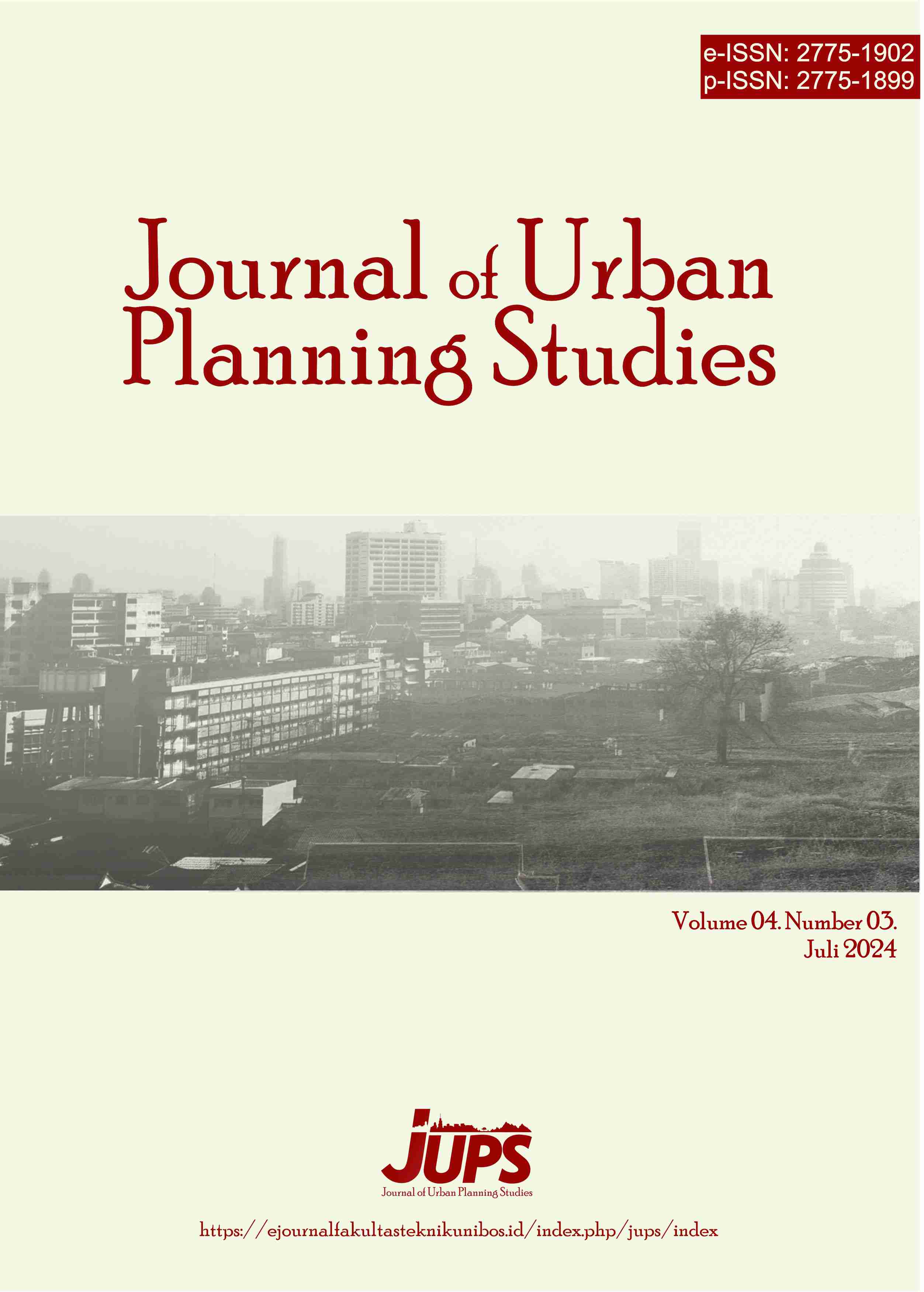Arahan Pengendalian Ruang di Sekitar Tempat Pemrosesan Akhir (TPA) Caddika Desa Pabbentengan Kecamatan Bajeng Kabupaten Gowa
DOI:
https://doi.org/10.35965/jups.v4i3.509Kata Kunci:
Pertumbuhan Permukiman, Pengendalian Ruang , Sekitar TPA;Abstrak
Abstract. The purpose of this study is to determine the factors of settlement growth around the landfill and appropriate directions to control the space around the landfill. The type of research used is quantitative research as a consideration and reference material in descriptive analysis. The variables used in this study, among others; (1) Urbanization, (2) Livelihoods, (3) Institutions, and (4) Limited Land. The analysis method used is in the form of multiple linear regression analysis in determining factors that affect settlement growth.Based on the results of multiple linear regression analysis, the variables that most influence the growth of settlements around the Caddika landfill are urbanization and livelihoods. So that these two most influential variables are used as directions to control the space around the landfill accompanied by space control instruments, such as; zoning regulations, incentives and disincentives, licensing and imposition of sanctions.
Abstrak. Tujuan dari penelitian ini adalah untuk mengetahui faktor terjadinya pertumbuhan permukiman di sekitar TPA dan arahan yang sesuai untuk mengendalikan ruang di sekitar TPA. Jenis penelitian yang digunakan adalah penelitian kuantitatif sebagai bahan pertimbangan serta bahan rujukan dalam menganalisa deskriptif. Adapun variabel yang digunakan dalam penelitian ini, antara lain; (1) Urbanisasi (2) Mata Pencaharian (3) Kelembagaan dan (4) Keterbatasan Lahan. Metode analisis yang digunakan berupa analisis regresi linier berganda dalam penentuan faktor yang berpengaruh terhadap pertumbuhan permukiman. Berdasarkan hasil analisis regresi linier berganda variabel yang paling berpengaruh terhadap pertumbuhan permukiman di sekitar TPA Caddika adalah urbanisasi dan mata pencaharian. Sehingga kedua variabel yang paling berpengaruh ini digunakan sebagai arahan untuk mengendalikan ruang di sekitar TPA disertai dengan instrumen pengendalian ruang, seperti; peraturan zonasi, insentif dan disinsentif, perizinan dan pengenaan sanksi.
Referensi
Andini, F., Supriyanto, H., & Wijayanti, N. (2022). Long-term exposure to air pollution from waste incineration and respiratory health in Jakarta. Journal of Environmental Health Indonesia, 15(1), 65-78.
Field, A. (2022). Discovering Statistics Using IBM SPSS Statistics. SAGE Publications.
Garcia, M., & Cruz, R. (2021). Socio-economic impacts of waste management facilities in urban areas: A case study from the Philippines. Journal of Environmental Management, 279, 111566.
Harrison, M., Thompson, J., & Brown, C. (2022). Economic implications of waste in modern societies. Journal of Economic Perspectives, 36(2), 98-112.
Johnson, M., White, S., & Thompson, P. (2023). Methane emissions from landfills and their contribution to climate change. Journal of Environmental Management, 280, 111-123.
Kumar, V., & Singh, P. (2023). Waste management challenges in developing countries and their impact on public health. International Journal of Environmental Science and Technology, 20(1), 45-58.
Miles, M. B., & Huberman, A. M. (2022). Qualitative Data Analysis: An Expanded Sourcebook. SAGE Publications.
Nugroho, H., & Santoso, A. (2022). Soil and water contamination from landfill leachate in Indonesia. Journal of Environmental Protection Indonesia, 8(4), 356-369.
Putri, A., Wijaya, D., & Rahmawati, S. (2022). Public health impacts of landfill waste accumulation in Indonesia. Indonesian Journal of Environmental Health, 14(2), 134-147.
Smith, J., Brown, L., & Patel, R. (2022). Public health impacts of landfill waste accumulation. Environmental Health Perspectives, 130(4), 465-478.
Suryani, N., Rahayu, M., & Pratama, R. (2023). Methane emissions from landfills in Indonesia and their contribution to climate change. Journal of Environmental Management Indonesia, 23(1), 87-102.
Wibowo, S., & Hartati, Y. (2023). Waste management challenges in Surabaya and their impact on public health. International Journal of Environmental Science and Technology Indonesia, 9(1), 56-71.
Williams, R., Thompson, J., & Brown, C. (2021). Strategies for sustainable waste management in urban areas. Journal of Urban Planning and Development, 147(1), 75-89.
Yin, R. (2021). Waste Management and Environmental Impact. Environmental Studies Journal, 19(3), 245-260.
##submission.downloads##
Diterbitkan
Cara Mengutip
Terbitan
Bagian
Lisensi
Hak Cipta (c) 2024 Ilham Amsir, Muh Fuad Aziz, Rimba Arief, Arista Asrib

Artikel ini berlisensi Creative Commons Attribution 4.0 International License.













